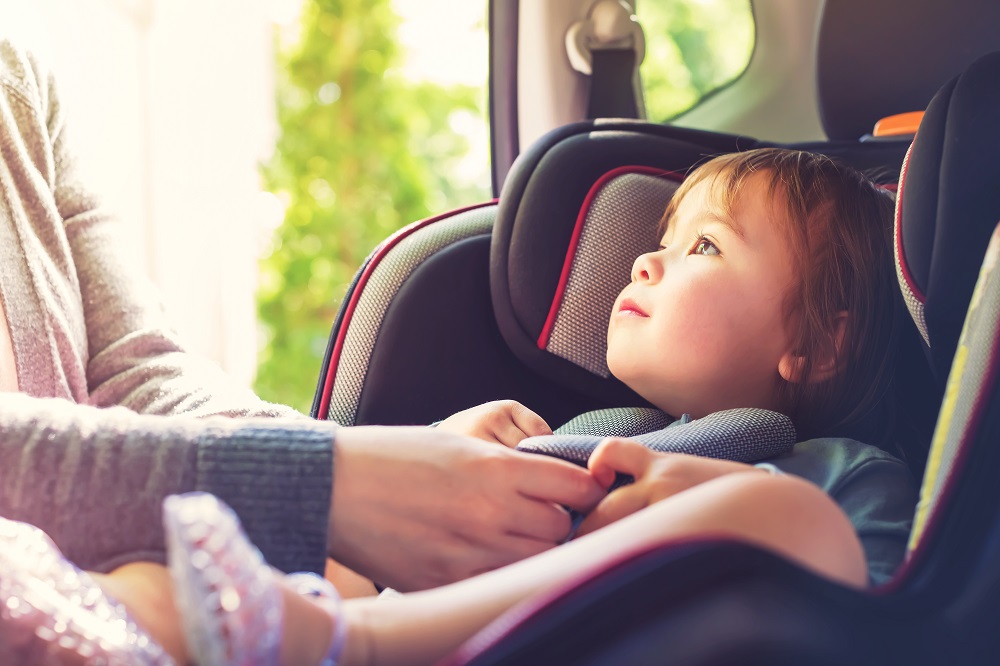Traveling by car with children requires careful planning and awareness to ensure their safety. Here are key strategies and tips to keep your child safe on the road.
Pick the Right Car Seat
Choosing a car seat that is suitable for your child’s age, weight, and height is crucial. There are three main types:
- Rear-facing seats: Suitable for very young children and toddlers up to 2 years old or until they reach the seat’s maximum weight and height limits.
- Forward-facing seats: For children at least 2 years old who have outgrown their rear-facing seat, typically until they reach about 65 pounds.
- Booster seats: These are for children who have outgrown forward-facing seats, usually until they are 4 feet 9 inches tall or between 8 to 12 years old.
Ensure the car seat is certified by safety standards and installed correctly. The best way to ensure safety is to buy your car seat from a trusted retailer like Nuna Baby. Refer to the car seat manual and vehicle’s owner manual for proper installation guidelines.
Install Car Seats Correctly
Improper installation of car seats is a common issue. Take these steps to make sure your car seat is installed correctly:
- Read the Manual: Always follow the car seat and vehicle manual instructions.
- Secure Installation: The car seat should not move more than an inch side to side or front to back.
- Use the Tether: For forward-facing car seats, attach the top tether to reduce forward movement in a crash.
- Check Recline Angle: Rear-facing seats should be at the correct angle to keep your child’s airway open.
Think about having your installation checked by a certified Child Passenger Safety Technician (CPST).
Use Seat Belts Properly
When transitioning to a seat belt, ensure it fits correctly:
- Lap Belt: Should lie snugly across the upper thighs, not the stomach.
- Shoulder Belt: Should cross the chest and shoulder, not the neck or face.
Teach children the importance of wearing their seat belts properly at all times. Never allow them to put the shoulder belt under their arm or behind their back.
Never Leave a Child Unattended
Leaving a child alone in a car can be dangerous due to risks such as heatstroke, hypothermia, or abduction. Even on mild days, temperatures inside a car can rise quickly, leading to life-threatening situations. Always take your child with you, even if you think you’ll only be away for a few minutes.
Keep the Car Safe
Ensure your car is a safe environment by:
- Activating Child Safety Locks: Prevent children from opening doors while the car is moving.
- Securing Loose Objects: Objects can become projectiles in a sudden stop or crash. Store items in the trunk or secure them properly.
- Maintaining the Vehicle: Regular maintenance checks for brakes, tires, and other critical systems ensure the car operates safely.
Educate Your Child
Teaching children about car safety is essential:
- Entering and Exiting Safely: Teach them to enter and exit the car on the curbside.
- Buckle Up: Instill the habit of buckling up as soon as they get into the car.
- Emergency Protocols: Explain what to do in case of an emergency, such as how to unbuckle their seatbelt and where to find you if you get separated.
Be a Role Model
Children often mimic adult behavior. Set a good example by always wearing your seatbelt, obeying traffic laws, and practicing safe driving habits.
By following these guidelines, you can significantly enhance your child’s safety while traveling by car. Prioritizing proper car seat use, maintaining a secure vehicle environment, and educating your child on safety protocols can help ensure a safe and pleasant journey for your family.

